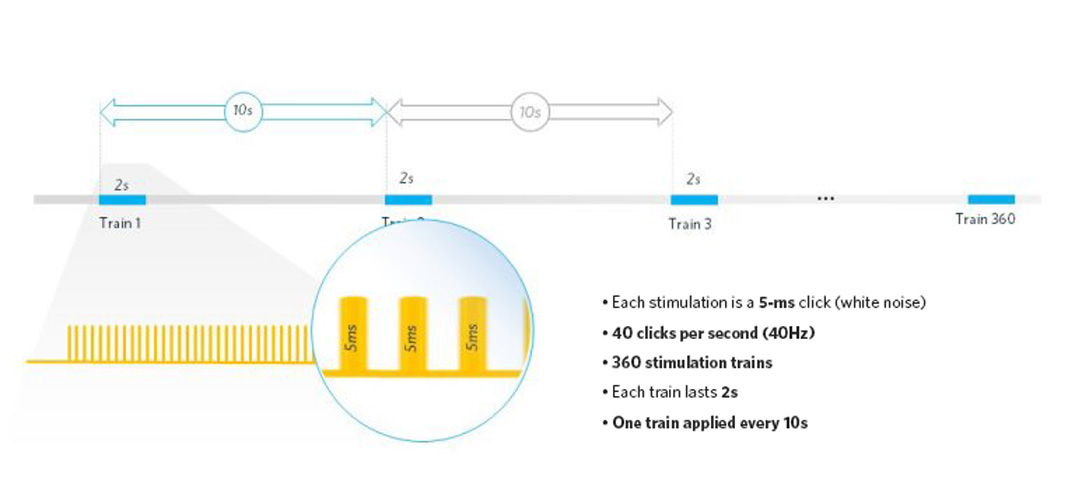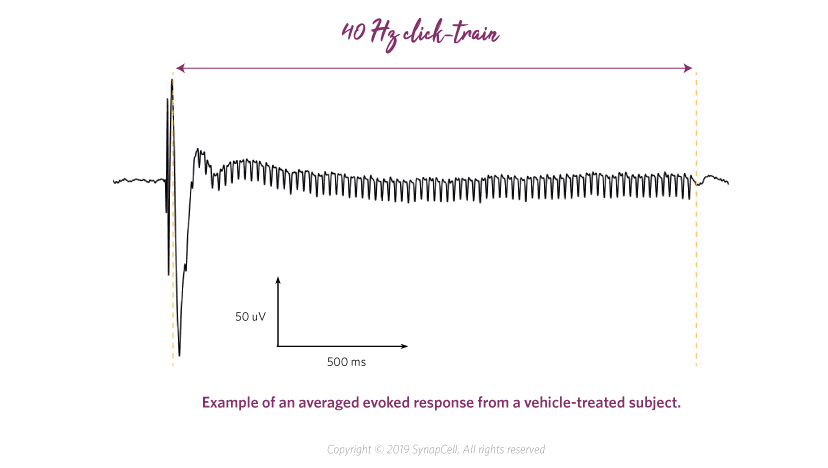Schizophrenia
Home » Solutions / Drug Efficacy Testing / Psychiatric Disorders / Schizophrenia
Schizophrenia & Cognitive Impairment:
Significant Unmet Treatment Needs
Schizophrenia is a complex neuropsychiatric disorder affecting around 24 million people worldwide*. This condition has two main symptoms, which constitute the two main targets of current treatments:
- Positive symptoms –behaviors that are not observed in healthy humans – such as hallucinations and delusions,
- Negative symptoms – behaviors that are reduced or absent compared to healthy humans – such as cognitive impairment and anhedonia.
A relatively large number of compounds have already reached the clinic, including typical (e.g. haloperidol, olanzapine) and atypical antipsychotics (e.g. clozapine, aripiprazole). However, they are only mildly effective on negative symptoms and some may even exacerbate these symptoms. This lack of effective treatments for negative symptoms is also due to the scarcity of robust and translational preclinical tests for cognitive deficiencies. It is critical to treat the negative symptoms of Schizophrenia, as it would allow an undeniable improvement in patient quality of life.
*According to the World Health Organization

MK-801 Model & 40HzASSR EEG Biomarker:
A Translational Model Coupled with a Clinical Readout
To support preclinical research in this particular area, SynapCell has developed a chemically-induced model of Schizophrenia. Injection of NMDA antagonists in rats or mice has been shown to induce Cognitive Impairment Associated with Schizophrenia (CIAS) and deficits in information processing. In our hands, MK-801 induces robust and translational modifications in rodents in the 40Hz ASSR paradigm. This model reproduces the clinical features of patients with Schizophrenia: reduced ASSR response and difficulty processing auditory stimuli.

An Objective EEG Biomarker
In the field of psychiatric disorders, it is often challenging to identify objective biomarkers since symptoms may be subjective.
Since the 40Hz ASSR assay does not rely on the rodent’s attention, or on complex behavioral measurements, we believe it comes as close as possible to an objective EEG biomarker for this indication.

A Relevant Animal Model
PCP intoxication, which was shown to mimic both positive and negative schizophrenic symptoms in humans, helped reveal a relevant mechanism of action underlying schizophrenic symptoms. Indeed, PCP inhibits NMDA receptors, leading to hypofunction and impaired signal transmission, receptor plasticity, and neuromodulation. Thus, modelling the disease using NMDA antagonists induces a phenotype close to the clinical picture.

Beyond Schizophrenia
Although the deficit in the 40Hz ASSR is often associated with Schizophrenia, it has been shown that it is more broadly related to a deficit in information processing. It can therefore also be applied to other types of diseases and disorders.
Based on recent studies, this paradigm was shown to translate not only schizophrenic symptoms but more generally a dysfunction in the cortical NMDA pathway (e.g. in Fragile X syndrome).
Key Features
of the MK-801 Model
The model is well accepted within the scientific community and well known for its translational characteristics.
Like in the clinic, some progress remains to be made in finding a relevant positive control as current standards of care fail to normalize responses, even in the clinic. Our biomarker is not sensitive to every compound and therefore represents a real selection step for candidates.
The scientific design can be adapted to accommodate the pharmacodynamic profiles of different compounds. Indeed, the study protocol can be fine-tuned to target the most effective post-administration time-window.
Drug Discovery Assays
with the MK-801 Model
This model is adapted to crossover (or Latin square) designs. These designs provide an efficacious way of screening compounds as they limit the total number of animals required while also increasing the statistical power of analyses, since all animals are exposed to all conditions.
If a candidate compound stands out after a first crossover study, or if you want to directly fine-tune the dose-range efficacy of a specific compound, the crossover design can also help you to find the right dose. Thanks, once again, to strong and robust statistical analyses.
Finally, to make the most out of a single study, we can tailor the experimental protocol to include baseline recording periods, so as to perform quantitative EEG, or to separate the different trains of stimulations, so as to incorporate application of a different protocol of auditory stimulations, generating additional data.
POSTER
40HZ-Auditory Steady-State-Response as a New Tool for Drug Discovery in Schizophrenia
In this study, our goalwas to measure reliable ASSRs in freely moving rat models of NMDA hypofunction, quantify responses in frontal and auditory cortices (two structures known to show ASSRs), as well as investigate a graded deficiency in NMDA transmission induced by MK-801 on EEG entrainment to 40 Hz click stimuli.
DOWNLOAD
POSTER

Powered by Cue®, SynapCell's Predictive In Vivo EEG Platform
SynapCell’s MK-801 model and its associated EEG biomarker are processed on Cue®, our innovative translational in vivo EEG platform, which is designed to predict the in-human efficacy of your drug candidates during the preclinical step. Cue® is the result of decades of R&D, combining SynapCell’s know-how, expertise and scientific excellence in the fields of brain surgery and EEG signal recording, processing, and analysis.
Using Cue®, we transform preclinical data into actionable insights, offering end-to-end support for informed decision-making in CNS drug discovery.
THE SCIENCE CORNER
Auditory Steady-State Response (ASSR)
ASSR is widely used in the clinic and well-known in the field of psychiatric disorders as it is a relevant biomarker of the brain’s ability to coordinate a cortical response to an auditory stimulus. The paradigm consists in producing auditory stimulations over a specific time-frame. In this case, the auditory stimulus is a 5-ms white noise (click), repeated 80 times over 2 seconds at 40Hz. These 2-second trains are then repeated 360 times to generate enough data for robust statistical analysis and to ensure reproducibility. Responses are then averaged to calculate the different signal parameters and isolate the corresponding biomarkers.
Inter-Trial Coherence (ITC)
The ITC is one of the most used read-outs for the ASSR paradigm. It is a surrogate for the ability of the system to process the auditory signal in a relevant and consistent manner each time the animal hears a stimulus. The higher the ITC, the more consistent the brain’s responses to auditory cues, reflecting a normal information-processing process.
Let's Talk About Your Research Project!
More than a CRO, a team of collaborators – we are your dream neuroscience team specialized in preclinical EEG! We don’t just produce data, we are your partners from conceptualization to conclusion. We translate raw EEG data into meaningful, clinically-relevant endpoints, delivering clear insights to allow data-based decision-making. Choose SynapCell, a leading preclinical CNS-specialized CRO for cutting-edge EEG expertise combined with an irresistible touch of fun.
News & Events
PRESS RELEASE
SynapCell and the University of Utah Celebrate the 10-year Anniversary of their Collaboration on Anti-Seizure Medications.
NEW!
AMYGDALA KINDLING MODEL
Choose our Amygdala Kindling model to test compounds targeting focal-to-bilateral tonic-clonic seizures. Choosing the right model for the appropriate type of epilepsy seizures is key to the effective discovery of ASMs.
NEW!
SLEEP & VIGILANCE STATES
Discover SynapCell’s new preclinical EEG capabilities for sleep and vigilance states, and gain additional insights to characterize compound effects.


